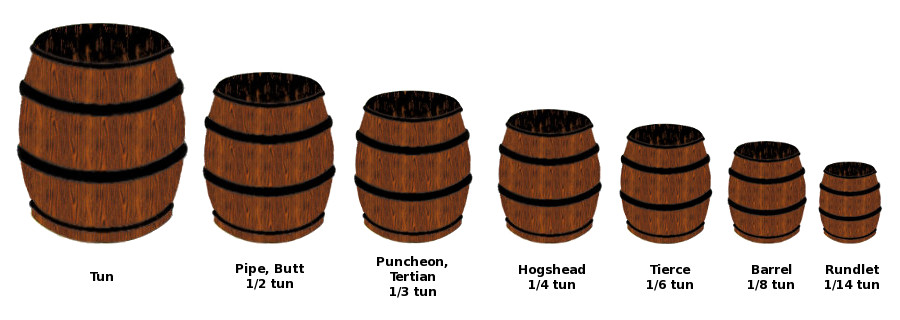TUN (tun)
A
large cask for liquids, especially wine
Common clues: Wine
cask; Napa vessel; Large barrel; Wine holder; 252 wine gallons;
Cask; Vintner's vessel; Large vat; Whopper cask; Winery
vessel
Crossword
puzzle frequency:
once a year
Frequency
in English language:
32285 / 86800
Video: Wine
Making Tips: Aging Wine in Barrels
The use of oak in wine plays a significant role in winemaking and can have a profound effect on the resulting wine, affecting the color, flavor, tannin profile and texture of the wine. Oak can come into contact with wine in the form of a barrel during the fermentation or aging periods. It can be introduced to the wine in the form of free-floating oak chips or as wood staves (or sticks) added to wine in a fermentation vessel like stainless steel. Oak introduced in the form of a wine barrel can impart other qualities to the wine through the process of evaporation and low level exposure to oxygen.

In early wine history, the amphora was the vessel of choice for the storage and transportation of wine. Due to the perishable nature of wood material it is difficult to trace the usage of barrels in history. The Greek historian Herodotus noted that ancient Mesopotamians used barrels made of palm wood to transport wine along the Euphrates. Palm is a difficult material to bend and fashion into barrels, however, and wine merchants in different regions experimented with different wood styles to find a better wood source. The use of oak has been prevalent in winemaking for at least two millennia, first coming into widespread use during the Roman empire. In time, winemakers discovered that beyond just storage convenience that wine kept in oak barrels took on properties that improved the wine by making it softer and in some cases better-tasting. Robert Mondavi is credited with expanding the knowledge of winemakers in the United States about the different types of oak and barrel styles through his experimentation in the 1960s & 1970s.
The porous nature of an oak barrel allows some levels of evaporation and oxygenation to occur in wine but typically not at levels that would cause oxidation or spoilage of the wine. In a year, the typical 59-gallon barrel can lose anywhere from 5 1/2 to 6 1/2 gallons of wine through the course of evaporation. This evaporation (of mostly alcohol and water) allows the wine to concentrate its flavor and aroma compounds. Small amounts of oxygen are allowed to pass through the barrel and acts as a softening agent upon the tannins of the wine.
The chemical properties of oak itself can have a profound effect on the wine. Phenols within the wood interact with the wine to produce vanilla type flavors and can give the impression of tea notes or sweetness. The degree of "toast" on the barrel can also impart different properties affecting the tannin levels of the wine as well as the aggressive wood flavors. The hydrolyzable tannins present in wood, known as ellagitannins, are derived from lignin structures in the wood. They help protect the wine from oxidation and reduction.
This article is licensed under the GNU Free Documentation License. It uses material from the Wikipedia article "Tun".
|
|